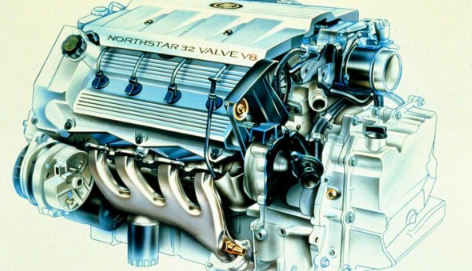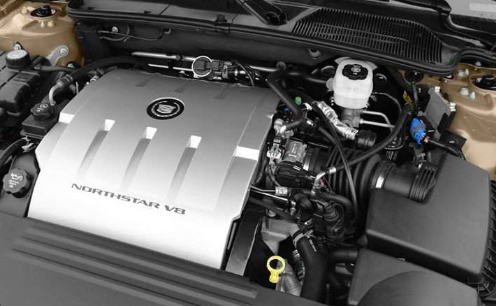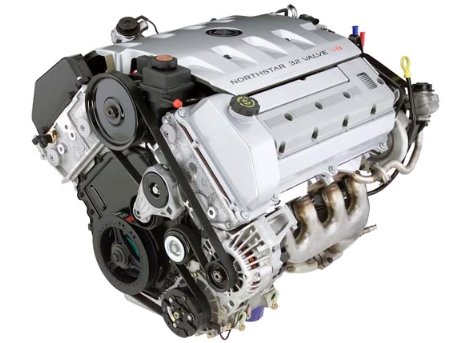The Northstar engine series represents a top-tier 90° V engine lineage meticulously crafted by General Motors. Production of these engines spanned the years from 1993 to 2011. It marked a significant milestone for GM as their inaugural V-8 production featured overhead camshafts. Nonetheless, it’s worth noting that the Northstar engines came with a rather exorbitant repair cost, contributing to their notoriety.
Certain recurring problems have persisted over time within Northstar engine issues. Head gasket troubles, oil-related woes, diminished fuel efficiency, and carbon buildup within cylinders rank among the most commonly reported malfunctions associated with the Northstar engine.
Today, the focus is on highlighting what year Northstar engines should avoid, alongside delving into the prevalent issues that have plagued these engines throughout their existence.
🎯Suggested article:
Years to Exercise Caution with Northstar Engines (List of Years)

While the Northstar engine enjoyed a production span exceeding 18 years, some of its iterations faced many issues attributable to its intricate design. It’s crucial to note that these issues, while not catastrophic, incurred substantially higher repair costs than most comparable engines owing to their complicated engineering.
Thus, prospective buyers may want to exercise caution regarding the following Northstar engine models:
- 1993 – 1999 Northstar L37
- 1994 – 2002 Northstar LD8
- 2004 – 2005 Northstar LH2
- 2006 – 2009 Northstar LC3
One major hurdle encountered with the initial Northstar V-8 engines, dating from 1994 to 2001, pertained to oil leakage issues, particularly around the back main gasket. This problem was prevalent in Northstar engines manufactured before 1999.
Another prominent issue revolved around head gasket failures stemming from the accumulation of debris due to oil combustion. Regarding LB7 models produced from 2001 to 2007, fuel starvation and injector problems reared their heads.
🚀Recommended article:
Identifying the Worst Year for Northstar Engines
The inaugural iteration of the Northstar engine, the Northstar L37, stands out as the most problematic from GM’s perspective. Older vehicles with L37 Northstar engines faced recurring leaks around the seals and valve covers. A key contributing factor was clogging the oil pressure relief valve on Northstar engines manufactured in 1993 and 1994. This issue necessitated the replacement of gaskets and seals, posing a considerable inconvenience for customers.
Understanding What Year Northstar Engines To Avoid

Although the Northstar engines introduced a pioneering concept upon their inception, General Motors’ customers have grappled with many challenges, which we shall explore in detail.
Issues with the 1993 – 1999 Northstar L37 Engine
The pre-2000 L37 Northstar engines failed to adequately secure the rear main seals within the block, causing rapid wear and tear due to the crankshaft’s rotation. The Northstar L37’s rear main gasket resides at the juncture where the crankshaft exits the block, tasked with preventing oil leaks. Irregular oil changes and low oil levels could frequently lead to leaks. Extended periods of inactivity could also result in the seal drying out and cracking, exacerbating the problem.
Problems with the 1994 – 2002 Northstar LD8 Engine
The root of troubles within LD8 Northstar engines lies in their oiling system. Blockages in the pressure relief valve, caused by trapped materials, are to blame. Older LD8 engines suffered from leaks from gaskets and valve plates, often leading to sudden drops in oil pressure, particularly in early LD8 Northstar engines. Replacing these gaskets is a labor-intensive task, necessitating the replacement of seals and gaskets. Notably, excessive oil consumption was another issue attributed to carbon buildup in the rings, hindering their movement and subsequently affecting performance and fuel efficiency. GM introduced a ring-cleaning technique involving a solution to cleanse the rings in response to this problem.
Problems with the 2004 – 2005 Northstar LH2 Engine
Head gasket failures emerged as a common issue with LH2 Northstar engines, primarily stemming from design flaws. Excessive oil consumption in these engines resulted in substantial carbon buildup, leading to elevated engine temperatures and eventual head gasket blowouts. TTY bolts in the engine’s head stretch upon tightening and may cause the head to loosen from the block, further exacerbating the issue. Reusing these extended bolts or failing to replace them when necessary could also lead to head gasket failures.
Problems with the 2006 – 2009 Northstar LC3 Engine
The most prevalent problem observed in Northstar LC3 engines is glow plug overheating. Over-cycling of the glow plug module can result in their melting and severe damage, ultimately leading to breakage. This issue has been widely reported in various forums. Northstar LC3 engines are susceptible to oil seepage through the positive crankcase ventilation pipe. Most LC3 engines’ positive crankcase ventilation systems are prone to oil spillage into the intakes. This oil accumulation covers the turbo rotors, causing damage to the silicone rubber bottom hose and eventually leading to its rupture.
🎯Suggested article:
Which Northstar Engine Years Are Considered Safe for Purchase?
Generally, it’s advisable to steer clear of older models when considering vehicle purchases. With this principle in mind, the following Northstar engine models are considered favorable options in the contemporary era:
- 2000 – 2005 Northstar L47
- 1999 – 2002 Northstar LX5
The Northstar L47 engine gained fame on the racing circuit, with a notable presence in the 1995 sports car competition, featuring a variant boasting 650 horsepower. The Cadillac Northstar LMP program even employed a twin-turbo version of the L47. The standard L47 engine produced 320 horsepower and 290 pound-feet of torque. Meanwhile, the LX5, also known as the “Shortstar,” was powered by a V6 L47 Aurora engine, retaining the Northstar’s distinctive 90-degree V-angle across the cylinder block. The Northstar LX5 boasted 215 horsepower and 234 pound-feet of torque, although it was phased out in 2004.
In Conclusion
While Northstar engines initially generated significant buzz in the market before 2000, they gradually lost favor as other companies introduced superior engines. Owners of Northstar engines have grappled with issues such as oil leaks, head gasket failures, oil consumption, and carbon buildup, among others.
This guide aims to provide insights into the challenges many have faced with Northstar engines and advises potential buyers to exercise caution. If one is inclined to purchase a Northstar engine-equipped vehicle, choosing between the L47 and the LX5 models is recommended.
